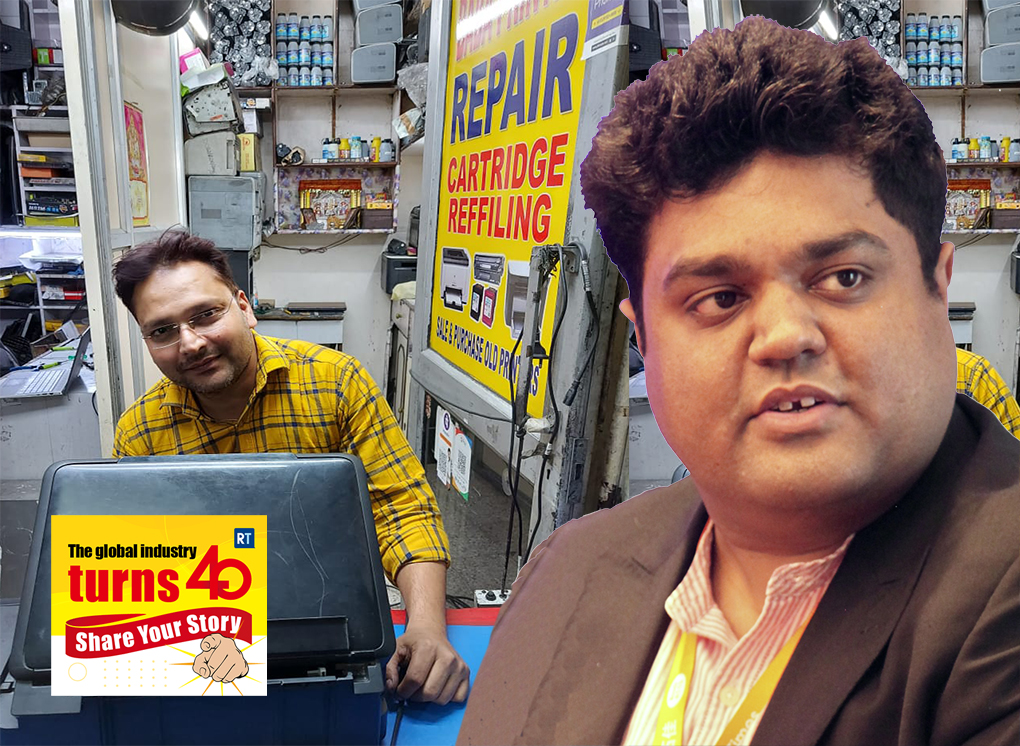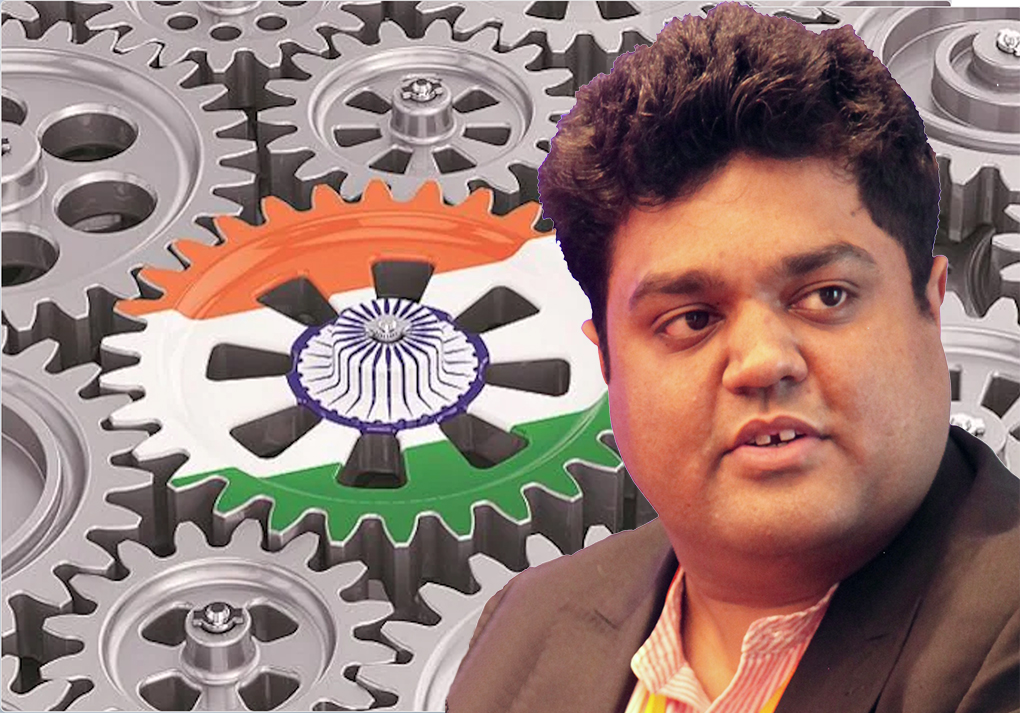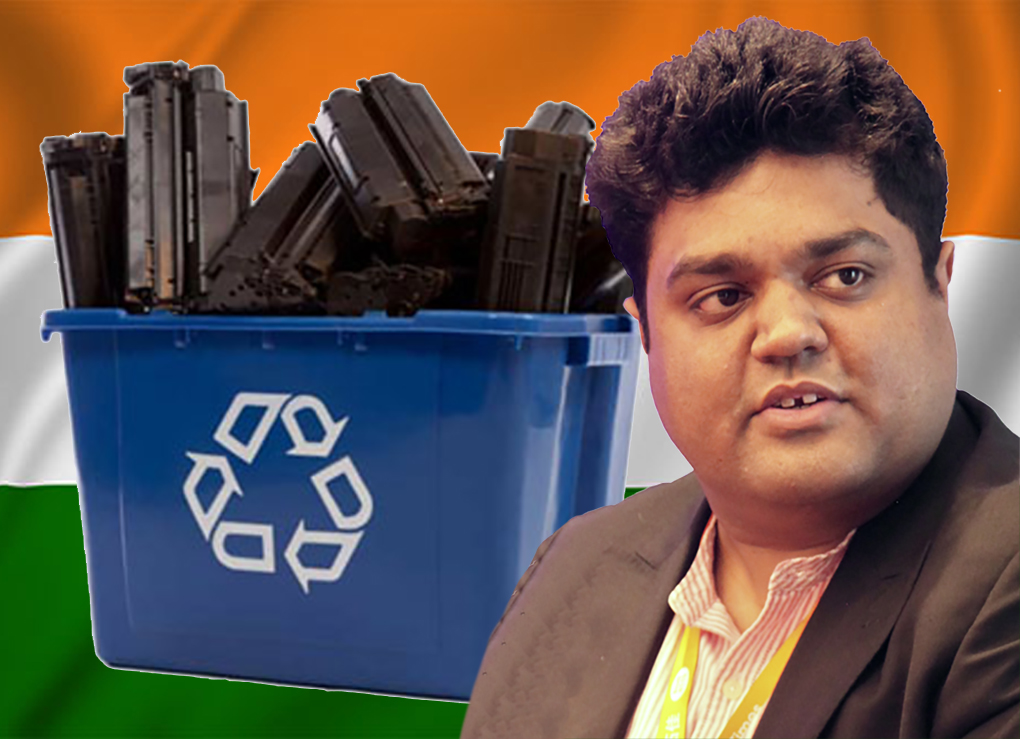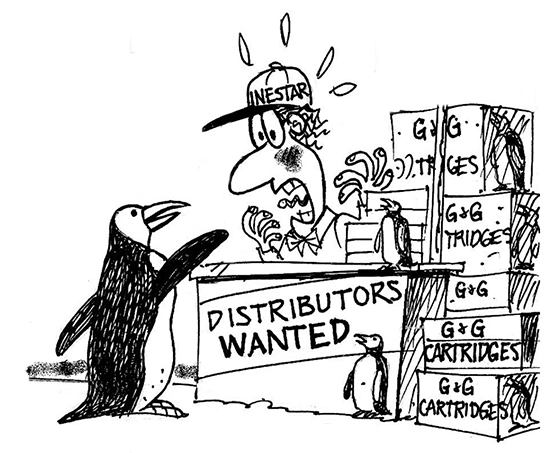Competition and Government Incentives Drive Growth
Competition and Government Incentives Drive Growth
 It wasn’t easy to write about the 40th anniversary of the global imaging industry in India. I’m just 32!
It wasn’t easy to write about the 40th anniversary of the global imaging industry in India. I’m just 32!
While I have spent 14 years in this industry, I am also well connected to those who have been in this industry since 1979. Can I call them seniors? They may not see it that way, but they provided me with the historical landmarks:
- The first copiers used zinc oxide (ZnO) paper, then plates. Liquid toner machines arrived in the early 1970s. By 1979, shops and engineers found they could profitably sell aftermarket, compatible ZnO papers, inks and dispersants to reduce the costs of the parts to service the expensive machines;
- In the early 1980s re-inked recycled ribbons became widely available—firstly for typewriters and then dot-matrix ribbons. Shops in the large cities offered local solutions as imports were restricted, licensed and had 310% customs duty whacked on top;
- In 1984 the government had a policy of giving bank loans to unemployed youth to set up photocopy shops. This led to a boom with at least 600,000 copy job shops across every town and village in India which led to tens of thousands of independent service engineers and a thriving aftermarket consumables market for all imaging products;
- By 1985 the first laser printers were launched and dozens of entrepreneurs with techie experience were soon refilling the very expensive original CX and SX toner cartridges with black toner powders and drums and making 800% markups;
- India’s economic reforms led to a welcome decline in customs tariff rates. From the “peak” rate of 310% in 1984, it became 150% by 1992, 40% by 1998 and 10% since 2007;
- Today, imports account for over 90% of the imaging industry and all printers and copiers are 100% imported thanks to the government policy under ITA 2000 of zero percent customs duty;
- The early foreign players in the industry were American leaders such as Katun and Static Control who saw the lucrative high growth and huge market potential. Then the Chinese factories created and catered to the demand of India’s thousands of very small importers;
- In recent times, the government is attempting to establish “Aatmanirbhar Bharat” to boost local manufacturing and is offering many industries between 4% and 8% incentives on incremental revenues where goods are manufactured locally in India. The “Made in India” policy is directed as a public procurement preference to promote patriotism with tax breaks;
Lessons learned from many struggling and failed company examples reveal it’s very difficult to sustain a business in this industry in India. While it is a very large and fast-growing market, it is also hyper-competitive and highly price-sensitive. A focus on quality, profitability, enduring value, brand goodwill and user experience come second, or are, in some cases, entirely absent when it comes to brand and loyalty. Winning business by offering the lowest price alone is still the only way to get a foot in the door of your target customers.
Established brands are sustainable and will deliver good profits and growth for your business. Funnily enough, if there are those who try to copy your brand, or try to sell the same product as you, or claim to buy from the same Chinese supplier, it means you have arrived. ■
** This article, “Competition and Government Incentives Drive Growth” appeared on page 17 of RT ImagingWorld magazine which can be downloaded for free.

What are your thoughts about Dhruv’s opinion, “Competition and Government Incentives Drive Growth.”
Dhruv Mahajan is RT Imaging World’s Regional Partner for India. Based in New Delhi, he has been an international business development manager responsible for the past twelve years developing the aftermarket imaging supplies business throughout the Gulf and Southeast Asia regions.
“I know all the key players in this market and I know they are looking for components as well as finished goods for laser, inkjet, copier, wide-format as well as new printer options. There are many medium-sized businesses I know that are also looking to expand their businesses and I am confident of providing support to them all.”
Mahajan is the International Business Development Manager for OCT Imaging responsible for the Gulf and Southeast Asia regions. Mahajan is partnering with RT to bring VIP Expo one day intensive events to cities in India each year. The OCT Imaging factory in Zhuhai has manufactured printer cartridges and distributed Mitsubishi drums and toners since 2011.
For more information please contact him at <dhruvm@oct-imaging.com>
Want to know more about the dynamic market in India? Read Mahajan’s other blogs and articles:
- Competition and Government Incentives Drive Growth
- Remanufacturing Printer Consumables in India
- India Will Soon Bounce Back with a Vengeance
- India to be Less Reliant on China for Imaging Supplies
- Anti-dumping Duty Added to Black Toner Imports
- Indian Aftermarket Reacts to Border Clashes with China
- Home Printer Sales Spike Thanks to Homeschooling
- Epson Grabs No 1 Market Position in India
- Indian Students Donate Masks Made from Chinese Printers
- Observing the Third Largest World Market – Trends in India
- Focus on Prices Alone Will Bring Doom
- Making Channel and Distributor Business More Profitable
- NEEDED: A Global Manufacturer to Set Up in India
- Women in the Indian Aftermarket
- Aftermarket Continues to Bite into the OEM Share of India
Comment:
Please add your comments below about this article, “Competition and Government Incentives Drive Growth.”











Leave a Comment
Want to join the discussion?Feel free to contribute!